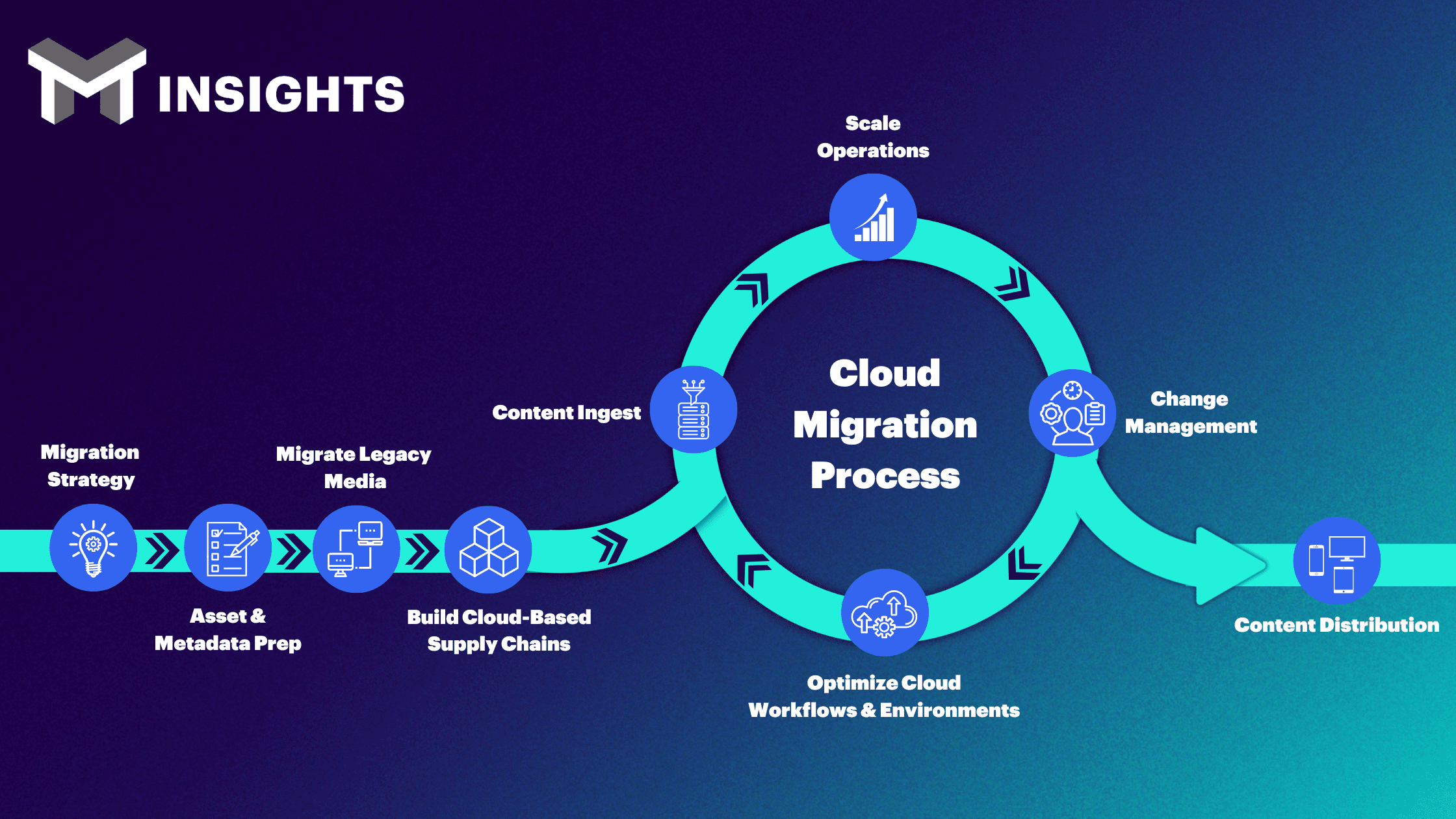Opinion: why the right approach is essential to successful cloud migration

Chris McCarthy, vice president, media solutions at TMT Insights, on why a cloud first approach is driving development in the media and entertainment industry
For an industry accustomed to measuring success in terms of product firmware updates and software versions, the pace of cloud migration across media and entertainment has been an interesting case study in iterative implementation.
Our industry has moved past earlier concerns about the cloud, such as security, data speed, and content access. Companies that not long ago would have said, “Cloud? Never!” are realising the cloud is the future if they want to remain competitive. They have done the maths and found that cloud technologies are now viable supply chain platforms.
The industry conversation surrounding the cloud has clearly shifted from “if” to “when.” The days of wondering whether it makes sense to move to the cloud at all are behind us. The right migration path has to make sense for the whole organisation, as well as its partners and customers. There’s no one-size-fits-all plan for everyone.
Some companies are wrestling with which aspects of their business should go to the cloud first, others are phasing their cloud migration while still harbouring concerns about moving on from their familiar processes and operational workflows. Even those that are still all SDI/baseband at least have the cloud on their radar. Regardless of where the industry is on its cloud journey, one constant is that the cloud is forcing people to think differently and examine their workflows more closely than they ever have.
According to a 2023 report on cloud adoption by Forrester, of all the M&E companies surveyed:
- 73% are running at least one application in the cloud.
- 57% use the cloud for storage
- 52% use the cloud for content piracy protection
- 92% say cloud adoption has been successful
The state of cloud migration
What new concerns or issues could possibly hold back the next wave of Cloud 3.0, 4.0 or beyond?
In the early phases of M&E’s cloud migration, most companies focused on determining what content in their library archives would move to the cloud, even as a backup at first while still maintaining their on-premise infrastructure. With many having completed that initial phase, the next step is building out supply chains in the cloud to make full use of the content that’s already been or will be, moved to the cloud. Now the big questions centre on how to ingest directly to the cloud, conduct processing in the cloud instead of on-premise, and then archive everything for easy access and use.
Even distribution is moving more to the cloud. Many companies that used to be concerned about egress costs and delivery logistics negating the cloud’s value are now seeing that more distribution endpoints and platforms are also in the cloud. They don’t have to deliver anything externally or pay egress fees. They can copy a piece of media with associated metadata from one bucket to another in the cloud.
Most downstream elements of the media supply chain, like archive or distribution, have already moved to the cloud. Now M&E professionals are more focused on looking further upstream in the supply chain towards cloud-based production and post-production – two areas traditionally viewed as “on-premise only.”
Virtual production still requires some level of hardware and people on-site, but the bigger benefit is that teams can be located anywhere around the world and still collaborate seamlessly on a remote production. Content goes directly to the cloud and then, once it’s there, the idea is that it stays there along with the rest of the downstream process.
A successful cloud migration also integrates the necessary change management procedures and any potential ripple effects across an organisation. Unlike a newly launched shop that likely started as cloud-native, more established organisations may have to manage operations and technology professionals who have worked for decades with easy access to hardware and are uncomfortable adapting to virtual environments. In these situations, it’s critical to maintain an open dialogue between management and teams to clearly communicate the benefits of change and to offer any training or support employees need.
The most significant challenge many companies still face is not having a solid cloud migration plan to make sure they receive all the benefits while avoiding any pitfalls. Organisations that have decided to move to the cloud must approach migration holistically, not only in terms of the physical movement of media assets but also the usable metadata that goes along with that. Moving to the cloud is a big step. Companies can’t expect to flip a switch and have everything work exactly as it did before.
Just as we’ve moved on from asking whether we migrate to the cloud at all, in the not-too-distant future, the only discussion will be around what elements do I still have on-premise and how do I get them into the cloud — basically the inverse of what we have today.
That’s a bright forecast for an industry with a cloudy future.
